Motorcycle helmets are an important piece of gear for any rider, but they only work well if they fit properly. In this guide, we will cover the most common questions people have about how to make a motorcycle helmet fit better. We will discuss everything from finding the right size to making small adjustments that can make a big difference. If you follow our tips, you will be able to wear your motorcycle helmet with confidence and stay safe on the road!
Table of Contents
Types Of Motorcycle Helmets
There are three main types of motorcycle helmets that you will see on the market today. These are full face, half face, and open face helmets. Each type of helmet has its own set of pros and cons that you will need to take into account when making your decision.
Full face helmets offer the most protection for your head and face in the event of an accident. They also tend to be the most comfortable and quietest type of helmet. However, they can be more expensive and can cause you to overheat in warm weather.
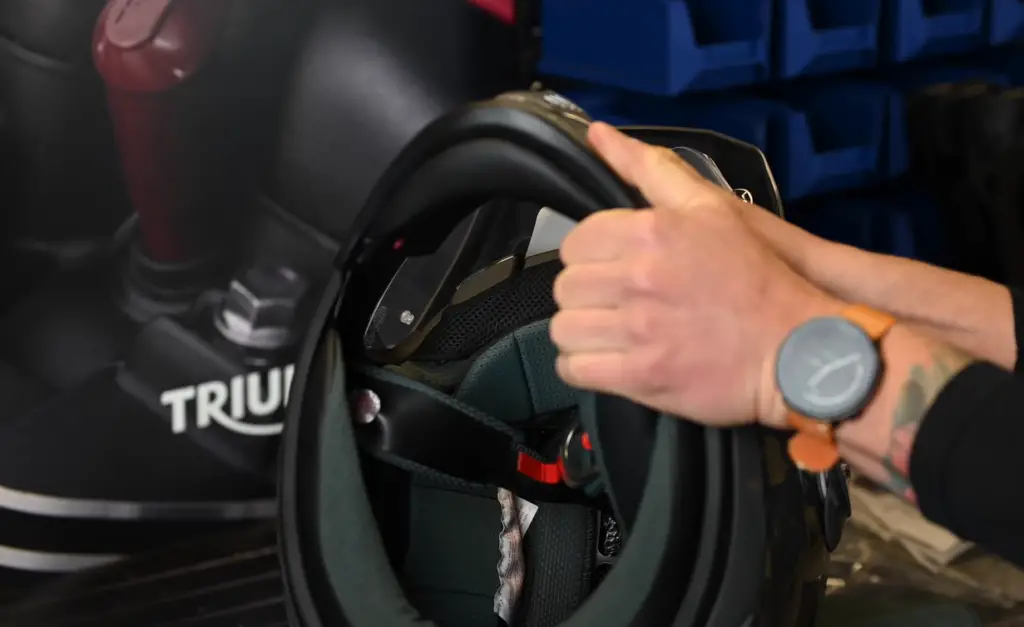
Half face helmets offer good protection for your head but leave your face exposed. This can be a good option if you wear glasses or if you want to be able to communicate more easily with other riders. However, half face helmets can be less comfortable in warm weather and can also be noisier than full face helmets.
They are also the coolest type of helmet in warm weather. However, they offer the least amount of protection for your head and face in the event of an accident. [2]How To Make A Motorcycle Helmet Fit Better
Motorcycle Helmet Head Shape
There are three main helmet head shapes that you will find when looking for a motorcycle helmet. These are long oval, intermediate oval, and round oval. Your head shape will determine how comfortable your helmet is and how well its ventilation works.
Long Oval – This is the most common head shape for people. If you have a long oval shaped head, then you will want to look for a motorcycle helmet that has more of an elongated shell. This will give you more room in the front of the helmet and prevent pressure points from forming.
Intermediate Oval – If you have an intermediate oval shaped head, then you want to look for a motorcycle helmet that has a slightly narrower shell. This will provide you with more room in the back of the helmet and help to prevent pressure points.
Round Oval – If you have a round oval shaped head, then you want to look for a motorcycle helmet that has a more rounded shell. This will provide you with more room in the sides of the helmet and help to prevent pressure points.
Once you have determined your head shape, then you can start looking at motorcycle helmets that are designed for that particular head shape. This will narrow down your choices and make it easier to find a comfortable helmet. [1]
Helmet Size
The first thing you need to do is measure your head. [4] To do this, you will need to wrap a measuring tape around your head just above your eyebrows. Make sure that the tape is level and that you are not pulling it too tight. Once you have your measurement, then you can consult the size chart for the helmet you are interested in to find the right size. It is important to note that helmet sizes vary between brands and models, so it is always best to try on a few different helmets before making a purchase. When trying on a motorcycle helmet, make sure that it sits level on your head and does not rock back and forth. The front of the helmet should sit about an inch above your eyebrows and the back of the helmet should extend to the base of your neck. You should also make sure that you can see clearly out of the eye port and that your peripheral vision is not obstructed. If you are still having trouble finding a helmet that fits, then you may need to consider having a custom helmet made. This is usually an expensive option, but it will ensure that you have a perfect fit.
Cheek Pads
Once you have found a motorcycle helmet that fits well, the next step is to adjust the cheek pads. The purpose of the cheek pads is to create a seal around your face and prevent wind and noise from entering the helmet. They also help to absorb sweat and keep your face cool. Most motorcycle helmets come with adjustable cheek pads that can be moved up or down to create a custom fit. To adjust the cheek pads, start by removing the helmet liner. Once the liner is removed, you will see two screws on either side of the helmet holding the cheek pads in place. loosen these screws until you can slide the pads up or down as needed. Once you have found a comfortable position for the pads, tighten the screws back into place and replace the helmet liner.
Helmet Position
Next step in adjusting your motorcycle helmet is to adjust the position of the helmet on your head. This is done by loosening or tightening the chinstrap.
Once you have found a comfortable position for the helmet, tighten the screws on either side of the chin bar to lock it into place.Chin Strap Adjustments
Next step in adjusting your motorcycle helmet is to adjust the chin strap. The chin strap should be tight enough that the helmet does not move around on your head, but loose enough that you can still breathe easily. Once you have found a comfortable position for the helmet, tighten the screws on either side of the chin bar to lock it into place.
Add/ Remove Padding
If you find that your motorcycle helmet is still not fitting correctly, then you may need to add or remove padding. Most helmets come with removable pads that can be added or removed as needed. To remove the pads, start by removing the helmet liner. Once the liner is removed, you will see the pads held in place by Velcro.

Simply peel back the Velcro and remove the pads. To add padding, start by finding a pad that is the same thickness as the one you are removing. If you cannot find an exact match, then choose a pad that is slightly thicker or thinner. Once you have found a suitable replacement pad, attach it to the helmet using the Velcro patches.
How To Tighten Motorcycle Helmet
If your motorcycle helmet is too loose, it can cause serious injury or even death in the event of an accident. It is important to make sure that your helmet fits snugly and securely on your head before you hit the road. Here are a few tips on how to tighten a motorcycle helmet:
- Start by adjusting the straps that go over your head and under your chin. These should be tight enough that you can only fit one or two fingers under them. [3]
- If your helmet has side straps, adjust these as well so they are tight but not uncomfortable.
- Most helmets have a dial or some other type of adjustment mechanism in the back. Use this to tighten or loosen the inner padding of the helmet until it feels snug.
- Once you have adjusted the straps and inner padding, put on your helmet and shake your head from side to side. The helmet should not move around or slip off when you do this. If it does, keep adjusting until it fits securely.
- It is important to remember that every time you take off your helmet, the straps will loosen slightly. So, before each ride, take a moment to readjust your helmet for a perfect fit.
Helmet To Stretch A Motorcycle Helmet
If your helmet is too tight, you may be able to stretch it out. This will depend on the materials the helmet is made from. For example, if your helmet is made of leather, you can try soaking it in warm water for a few minutes. This will make the leather more pliable and easier to stretch. You can then use your hands to gently stretch the helmet outwards. [5]
Another option is to buy a larger size helmet and use padding or liners to make it fit better. This is a good option if you can’t find a helmet that fits well enough off the shelf. You can buy special motorcycle helmet padding that will help to fill in any gaps and make the helmet fit snugly. Alternatively, you can use thin foam pads or even rolled-up socks to achieve a similar effect. Whatever you use, just make sure it doesn’t impede your vision or hearing while wearing the helmet.
If all else fails, you can always take your helmet to a professional who can custom-fit it for you. This is usually only necessary if you have an unusually shaped head or are particularly sensitive to pressure points. A professional fitter will be able to adjust the straps and padding inside the helmet to ensure it fits snugly and comfortably. This option will obviously be more expensive than buying a standard helmet, but it’s worth it if you can’t find a good fit any other way.
FAQ
What if my motorcycle helmet is too big?
If your motorcycle helmet is too big, there are a few things you can do to make it fit better. First, try adjusting the straps. If that doesn’t work, you can try wearing a scarf or bandana under your helmet. Finally, if all else fails, you can try using padding or an insert to make the helmet smaller.
How long does it take to break in a helmet?
It usually takes about a week of regular wear to break in a motorcycle helmet. The padding will soften and conform to your head, and the straps will loosen up. After that, you should be able to get a snug, comfortable fit.
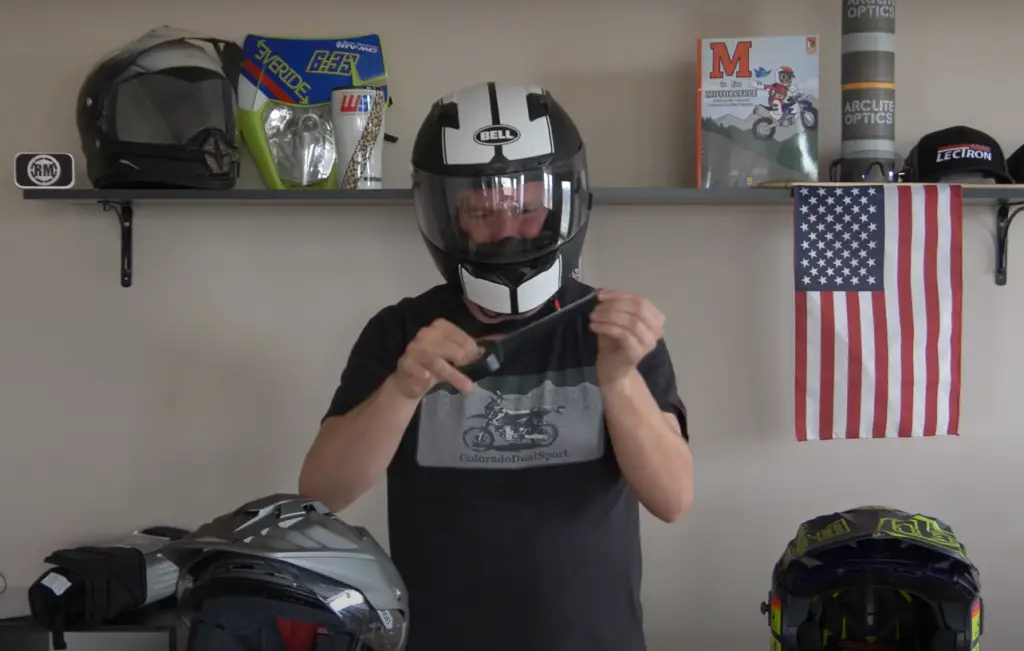
If you’re still having trouble, there are a few things you can do to help your helmet fit better. Try wearing it around the house for an hour or so each day. This will help the padding soften and conform to your head. You can also try adjusting the straps. Loosen them up a bit and see if that makes a difference.
If you’re still not getting a good fit, it might be time to try a different helmet. There are dozens of different styles and brands out there, so you’re sure to find one that fits well and is comfortable to wear.
Do motorcycle helmets loosen over time?
Yes, motorcycle helmets do loosen over time. This is because the materials used to make them (plastic, foam, etc.) compress slightly with use. As a result, it’s important to check the fit of your helmet periodically and adjust it as needed.
There are a few different ways to do this:
- Use the adjustment screws on the back of the helmet to loosen or tighten the straps.
- Move the positioning of the helmet on your head until it feels comfortable and secure.
- Add or remove padding from inside the helmet as needed.
With a little bit of trial and error, you should be able to find a position that is both comfortable and safe. Remember: never sacrifice comfort for safety!
How do I know if my motorcycle helmet fits?
There are a few ways to tell if your motorcycle helmet fits.
First, you should be able to see clearly out of the visor.
The helmet should sit level on your head- not tilted back or forward.
You should also be able to fasten the straps without it being too tight or too loose.
The helmet should feel snug all the way around.
If you can fit two fingers between your chin and the strap, it’s too loose.
Finally, try shaking your head side to side and up and down vigorously.
The helmet shouldn’t move around on your head or fall off.
If it does, it’s definitely not a good fit!
How tight should a motorcycle helmet strap be?
The motorcycle helmet strap should be tight enough that it doesn’t move around on your head, but not so tight that it’s uncomfortable. You should be able to fit two fingers between the strap and your chin.
What happens if we wear tight helmets?
If you wear a helmet that’s too tight, it can actually cause more harm than good. A tight helmet can put pressure on your temples and cause headaches, as well as impairing your hearing. It can also be really uncomfortable to wear for long periods of time.
On the other hand, a helmet that’s too loose can come off in an accident, which obviously isn’t ideal.
Is it better to size up or down in helmets?
It’s generally better to size up in helmets. If a helmet is too small, it can be uncomfortable and might not offer the level of protection that you need. If you’re between sizes, it’s usually better to go with the larger size. You can always adjust the fit with pads or other methods (which we’ll get into later).
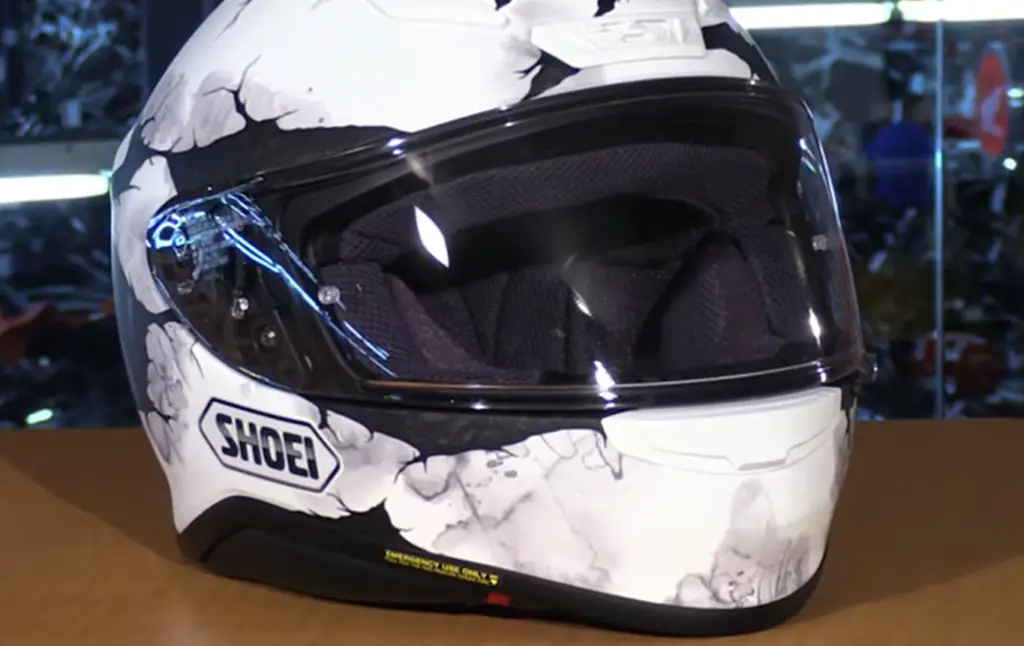
One exception to this rule is if you’re looking for a racing helmet. Racing helmets are designed to be snug so that they don’t come off in the event of a crash. If you’re buying a racing helmet, make sure you try it on before you buy it to make sure it’s comfortable and not too tight.
Useful Video: Motorcycles : How to Make Your Motor Cycle Helmet Fit Great
Conclusions
So, there you have it! Our complete guide to how to make a motorcycle helmet fit better. We hope that this has been helpful and that you now feel more confident about getting the perfect fit for your motorcycle helmet. Remember, a well-fitting helmet is essential for safety on the road, so take the time to get it right. Thanks for reading!
References:
- https://www.headsdontbounce.com/motorcycle-helmets/motorcycle-helmet-fit-better/
- https://www.motorcyclelegalfoundation.com/types-of-motorcycle-helmets/
- https://motorandwheels.com/can-you-change-size-motorcycle-helmet/
- https://helmetsadvisor.com/how-to-stretch-a-motorcycle-helmet/#How_to_Stretch_a_Motorcycle_Helmet_Make_It_Fit
- https://helmetsbest.com/how-to-stretch-a-motorcycle-helmet/

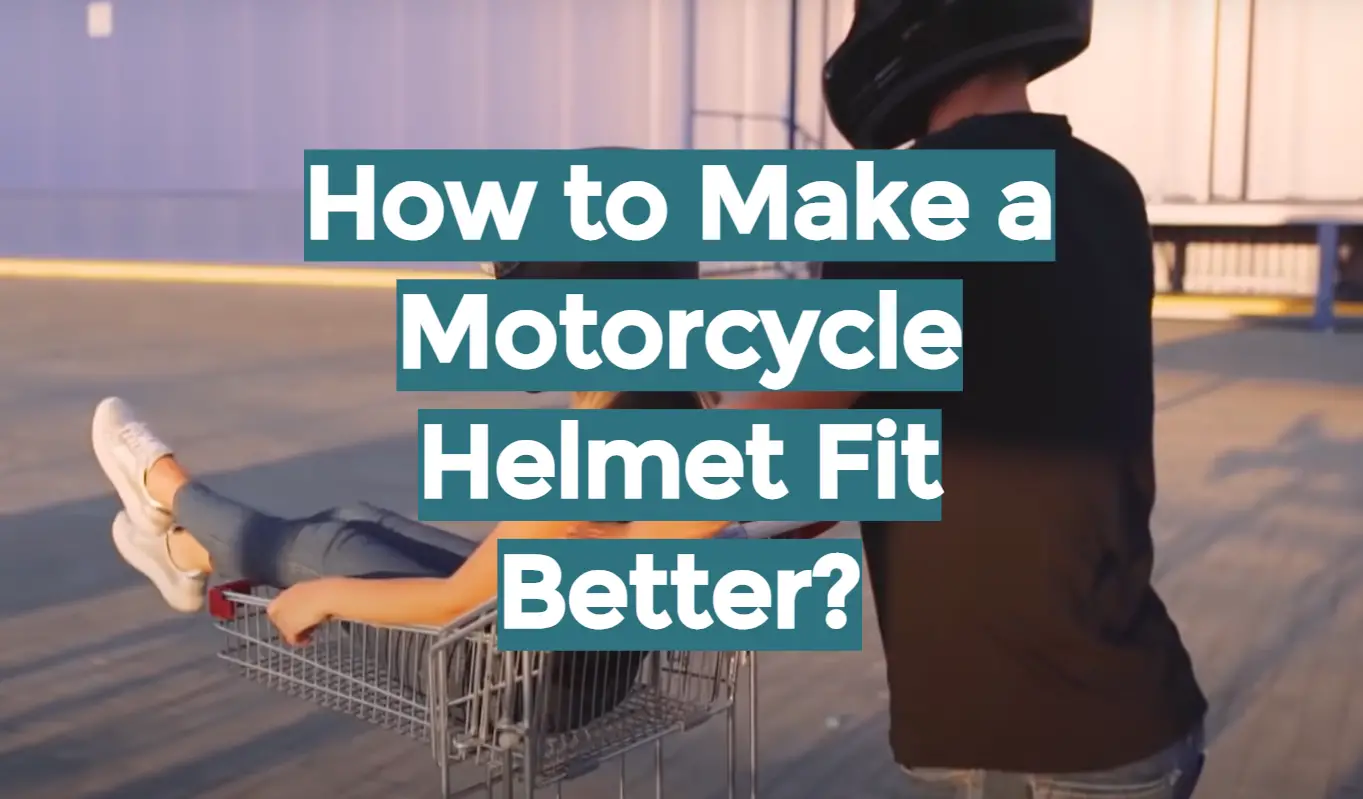

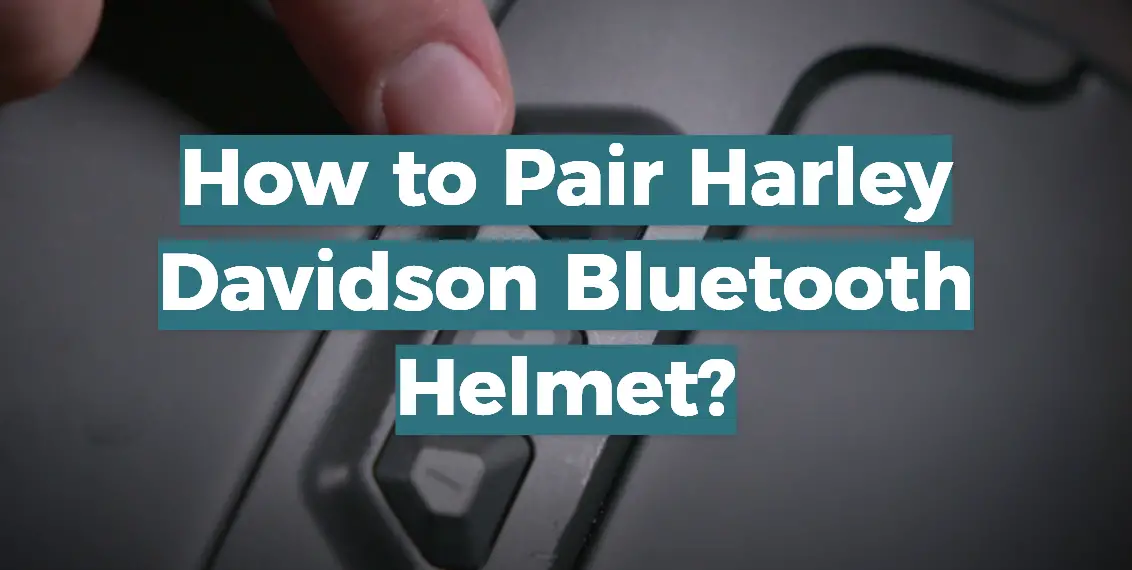
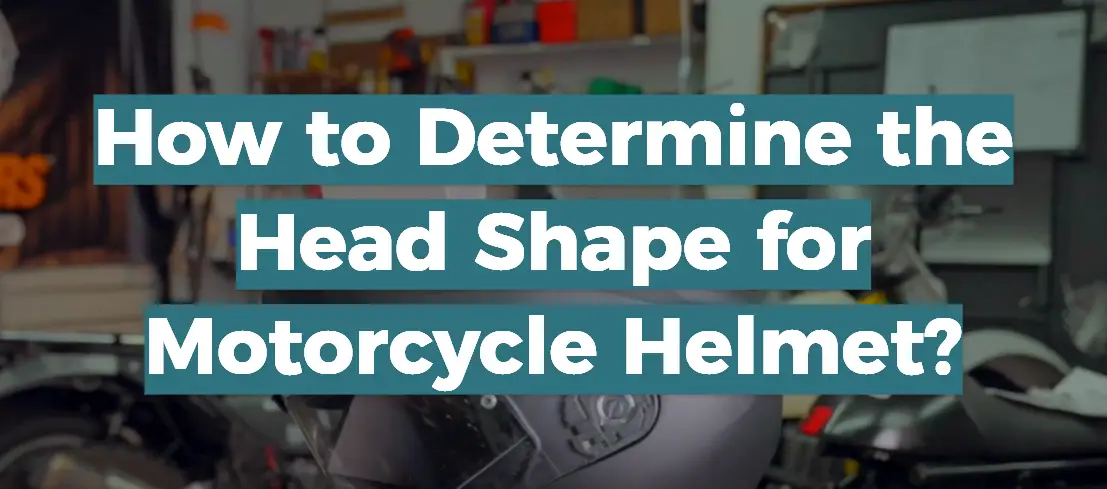
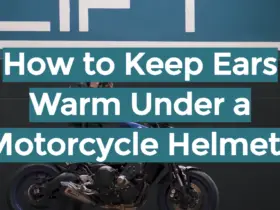
Leave a Reply